Key takeaways:
- Gamified education enhances student engagement through game mechanics like rewards, challenges, and narratives, creating immersive learning experiences.
- It fosters collaboration and social skills among students, allowing them to work together, communicate effectively, and build friendships.
- Techniques such as point systems, role-playing, and interactive quizzes promote motivation and make learning enjoyable and dynamic.
- Tools like Kahoot! and Classcraft transform classrooms into engaging environments that support effective learning through play.
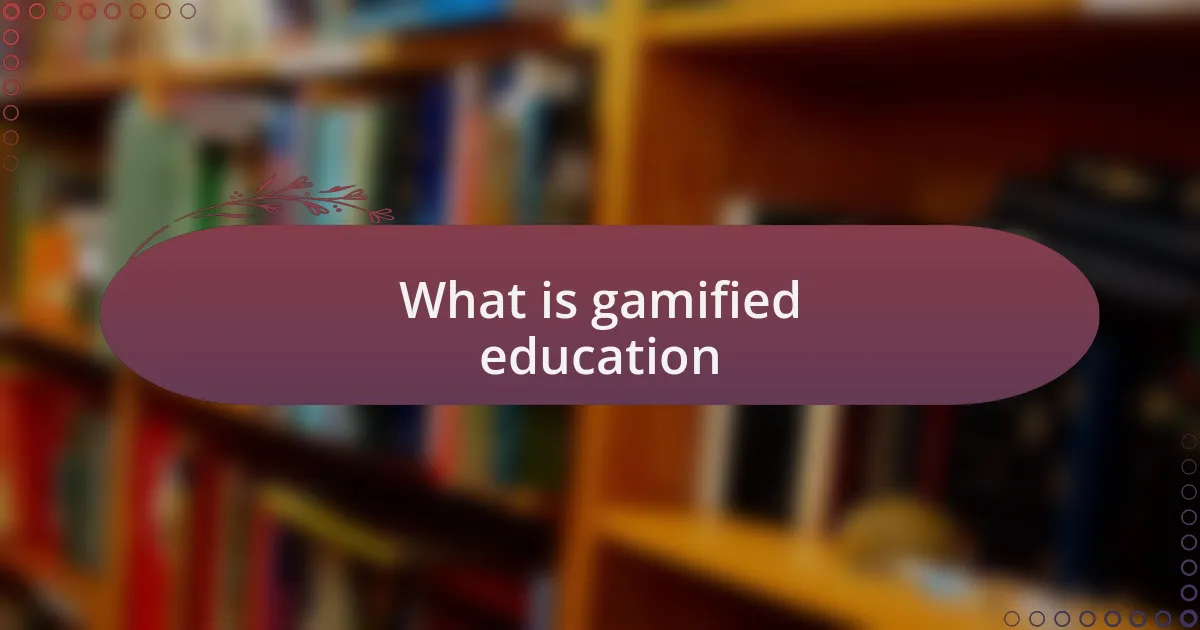
What is gamified education
Gamified education transforms traditional learning environments by integrating game mechanics to enhance student engagement and motivation. I remember the first time I experienced this approach in a classroom setting; the energy was palpable. Students were not just passively absorbing information; they were actively participating, competing for points, and collaborating in teams, which made the whole experience feel exhilarating.
At its core, gamified education utilizes elements like rewards, challenges, and narrative to create a more immersive learning experience. Have you ever wondered why some students thrive in competitive settings? I find that the thrill of earning badges or reaching new levels can turn what may seem like mundane tasks into exciting missions, ultimately fostering a love for learning.
One aspect that captures my attention is how gamification can cater to different learning styles. For instance, I once worked with a group of visual learners who thrived on the interactive graphics and storytelling elements incorporated into their assignments. By making education more playful and relatable, we can open doors for all learners to connect with the material on a deeper level.
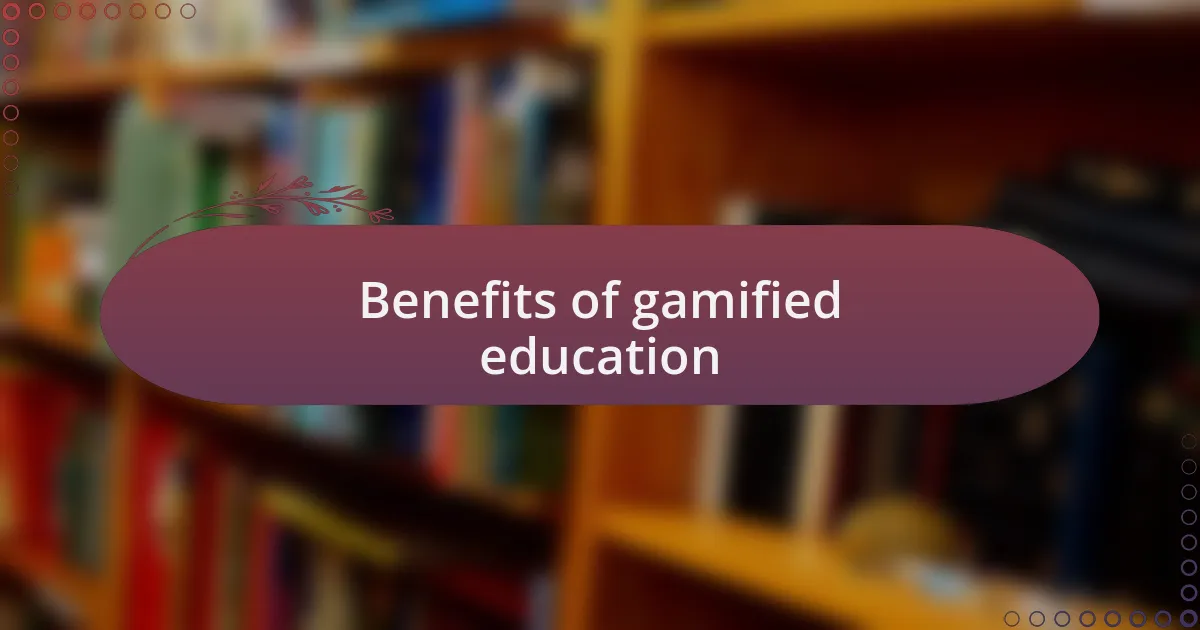
Benefits of gamified education
Gamified education offers a unique advantage in boosting student motivation. I recall a particular project where I implemented a point system for participation in discussions. The shift was remarkable; suddenly, quiet students started contributing their thoughts just to earn a few extra points, showcasing how even simple incentives can spark engagement.
Another benefit lies in enhancing collaboration and social skills among students. During a team-based game I facilitated, students not only worked together to solve problems but also learned to communicate effectively and appreciate each other’s strengths. It was fascinating to see friendships form as they cheered each other on, underscoring how gamification fosters a sense of community in the classroom.
Moreover, the element of instant feedback in gamified education cannot be overstated. I often experienced moments where students would gasp in delight at their progress, eagerly checking their scores or rankings. This immediate response helps them identify areas for improvement without the long wait for grades, making learning feel more dynamic and responsive.
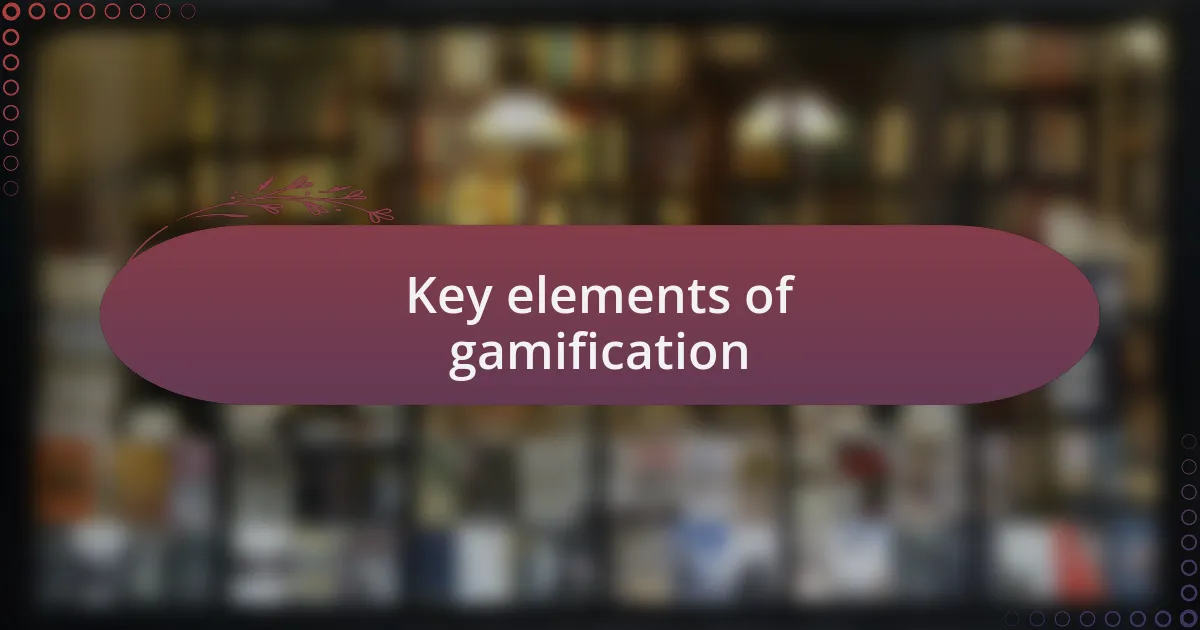
Key elements of gamification
Key elements of gamification play a crucial role in transforming the educational landscape. One of the standout elements is the incorporation of meaningful rewards. I remember introducing a badge system to celebrate both academic achievements and soft skills like teamwork. It was rewarding to witness students proudly display their badges, and I often wondered: how can such simple acknowledgment foster a deeper sense of pride and accomplishment in learners?
Another key element is the narrative or storyline that can envelop the learning material. In one project, I crafted a game where students took on the roles of explorers discovering new lands. Watching their enthusiasm as they engaged with the story made me realize that context can turn mundane lessons into thrilling adventures. It’s amazing how a little imagination can ignite curiosity and depth of understanding.
Progression mechanics, such as levels and challenges, further enhance the gamified experience. I implemented a tiered level system where students had to complete certain tasks to advance. The buzz in the room was palpable; students thrived on the challenge and felt a sense of ownership over their learning journey. Have you ever experienced that sense of satisfaction when you accomplish a tough task? That’s exactly what these mechanics offer— a chance for students to push their limits and see tangible results from their hard work.
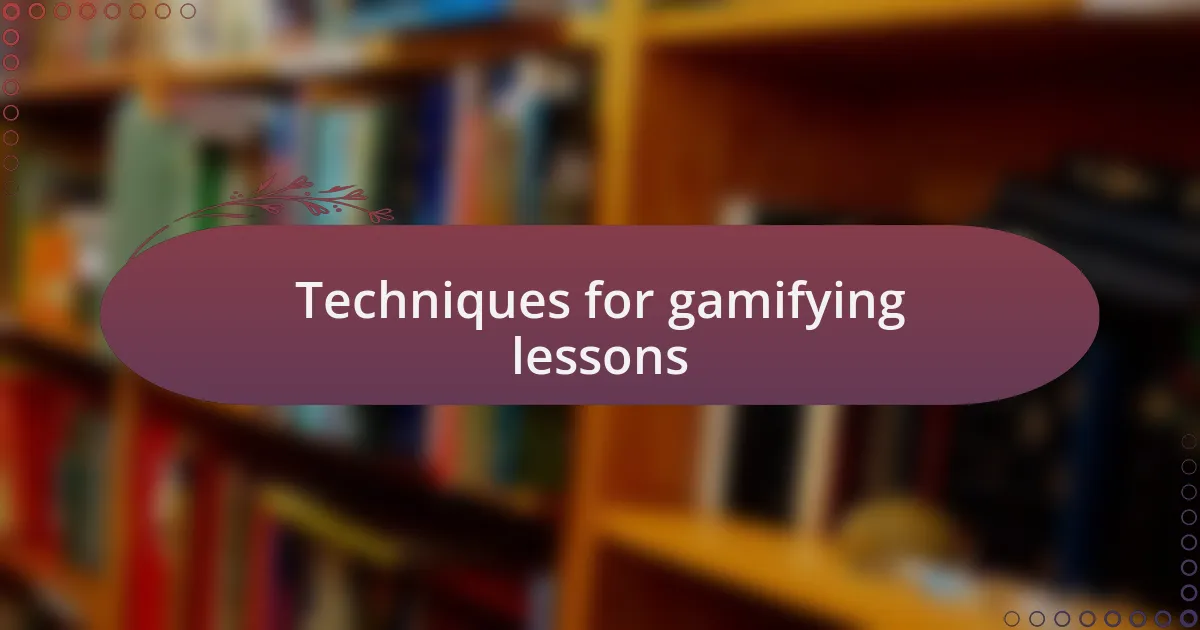
Techniques for gamifying lessons
One effective technique I’ve employed is the use of game elements like quizzes and challenges to reinforce learning. For instance, I once created a trivia game that incorporated the curriculum topics. Seeing students eagerly buzz in to answer questions made me reflect on the power of competition; it not only heightened their engagement but also solidified their understanding in an enjoyable way. Have you ever noticed how a little friendly rivalry can spark motivation in a classroom?
Another approach I’ve found invaluable is the use of points systems to track progress. In my classroom, I developed a point leaderboard that allowed students to accumulate points for participation, homework completion, and even peer support. The strategy transformed the dynamics of the class—students cheered each other on, fostering a collaborative spirit. It’s fascinating how a simple point system can encourage camaraderie and inspire each learner to strive for individual excellence.
Incorporating role-play elements within lessons is yet another technique I’ve seen yield incredible results. During a history lesson, I assigned students roles of historical figures, allowing them to act out key events. The energy was electric as students became invested in their characters, and I found myself marveling at how deeply they connected with the material. Can you imagine the insights gained when students don’t just learn history but embody it? It’s a profound reminder that engagement is often the key to understanding.
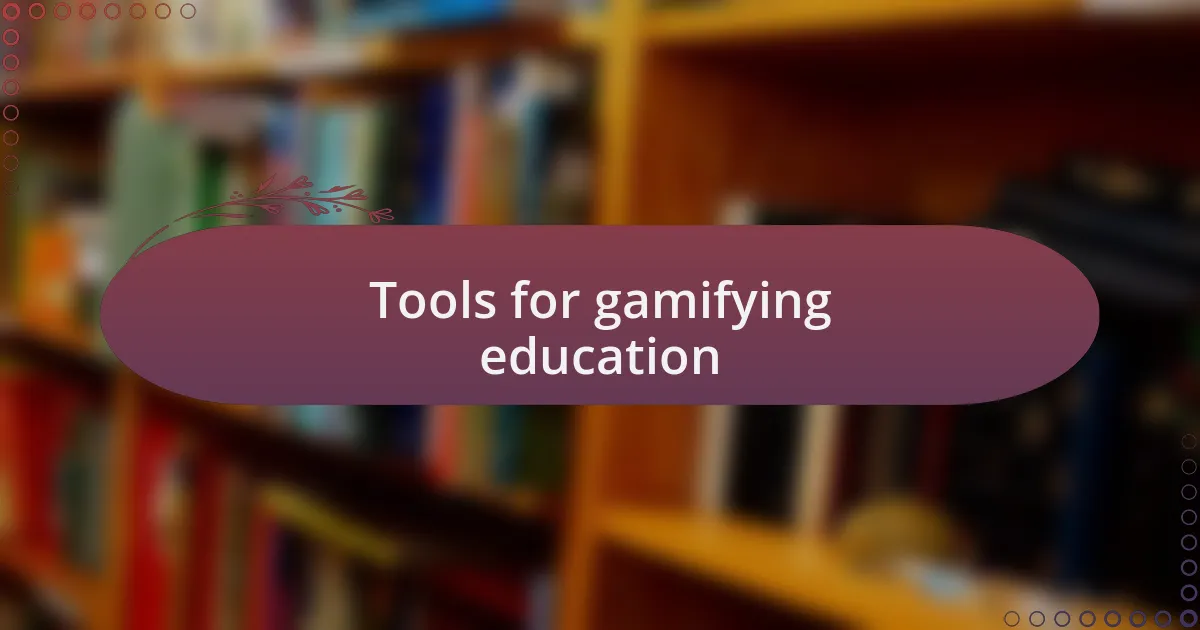
Tools for gamifying education
One of the standout tools I’ve utilized for gamifying education is Kahoot! This platform allows me to create interactive quizzes that not only test knowledge but also evoke a sense of excitement among students. I remember the first time I hosted a Kahoot! session—students were literally bouncing in their seats, eyes wide with anticipation as they raced to answer questions. It truly illustrated how technology can amplify excitement in the learning process; doesn’t it feel great to see students so engaged?
Another tool I often recommend is Classcraft. This innovative platform transforms classrooms into immersive role-playing experiences. I vividly recall a project where my students collaborated on quests that aligned with our curriculum. Watching them strategize and solve problems as a team, fully embodying their character roles, was inspiring. It made me ponder; how often do traditional lessons foster such unity and creativity? Classcraft truly demonstrates that learning can be an adventure.
Don’t underestimate the power of simple board games, either. I’ve designed custom games that align with lesson objectives, like a math game where students are “properties” earning money as they answer questions correctly. The laughter and teamwork fostered during these sessions were palpable, reminding me how joy can be a tremendous motivator in learning. Have you seen the magic that unfolds when students can learn through play? It’s remarkable how these tools can reshape their educational experience.
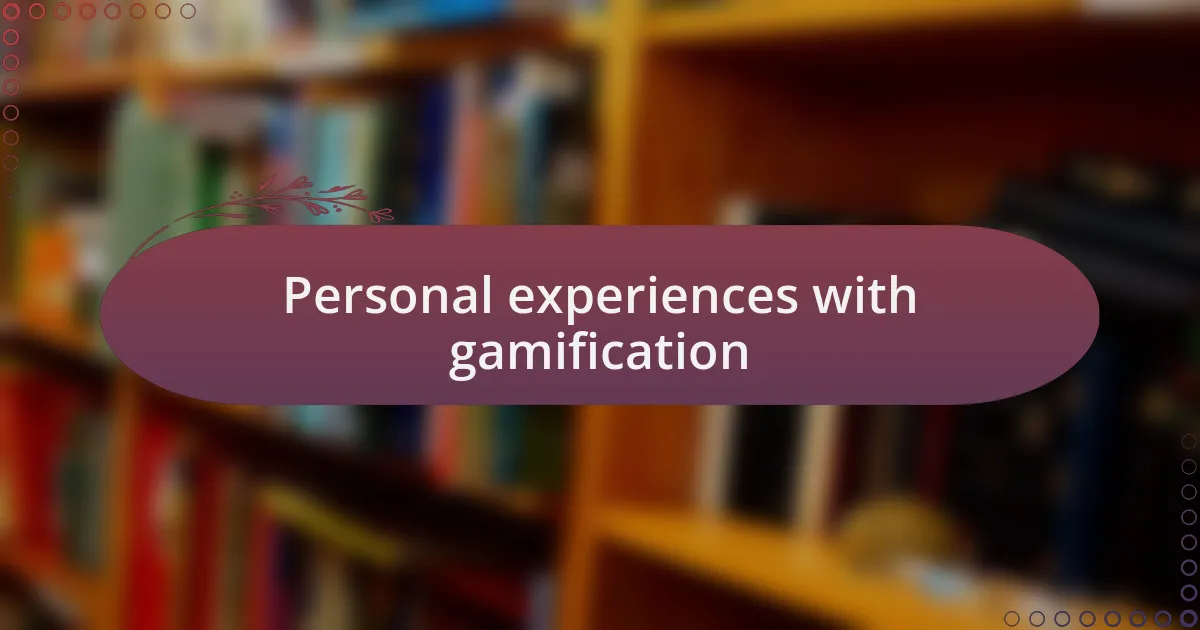
Personal experiences with gamification
One of my most memorable experiences with gamification happened during a science unit on ecosystems. I created a game where students earned points for identifying elements of food chains and participating in discussions. The excitement in the room was contagious! It felt rewarding to witness students who usually remained quiet become enthusiastic contributors, eagerly competing to share their insights. Wasn’t it intriguing how learning could morph into a playful competition that sparked their curiosity?
In another instance, I introduced a digital badge system to my history class. As students completed assignments and engaged in discussions, they earned badges that recognized their achievements and milestones. I remember one student, who typically struggled with participation, suddenly shining as he proudly displayed his growing collection of badges. It made me realize how these small forms of recognition can ignite a passion for learning—why not encourage everyone to pursue their personal best?
I also recall a literature unit where we transformed the reading of a novel into an interactive scavenger hunt. Students were tasked with finding themes and quotes that connected to their own lives while racing against the clock. The energy was electric, and unfamiliar friendships blossomed amidst the friendly competition. It gets me thinking—how often do we create those genuine connections through conventional methods? The thrill of this experience highlighted how gamifying education can not only deepen understanding but also foster a sense of community among learners.
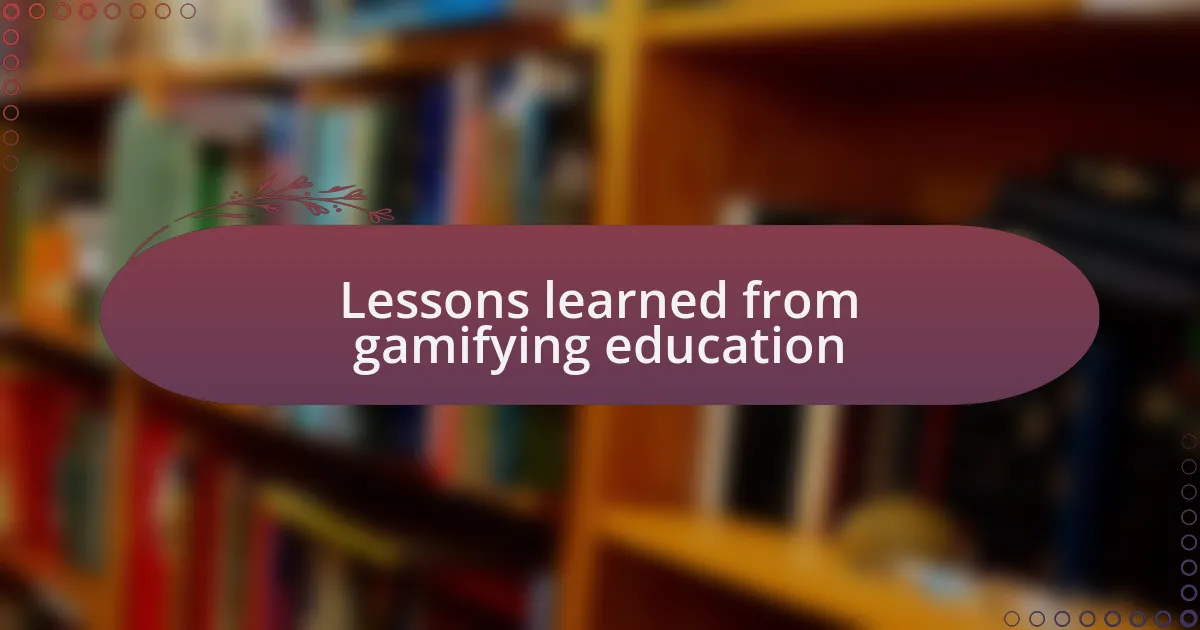
Lessons learned from gamifying education
Gamifying education taught me that motivation can drastically shift when students are actively engaged in their learning process. For instance, during a math unit, I integrated a leaderboard where students could see their progress in solving problems. One student, who usually dreaded math, transformed into a determined competitor. It was eye-opening to see how a simple game element could turn anxiety into excitement—Isn’t it fascinating how competition can serve as a powerful motivator?
Another lesson I learned was the importance of collaboration through gamification. I designed a team-based quiz game where groups had to work together to answer questions. Watching students collaborate, share strategies, and even cheer each other on opened my eyes to the social aspect of learning. It raises an important question: How can we ensure that our educational methods foster teamwork rather than isolate students?
Lastly, incorporating elements of storytelling into gamified lessons made learning more relatable. During a unit on geography, I had students create their own characters who navigated various terrains, facing challenges based on real-world scenarios. The creativity that emerged was incredible, and students connected more deeply with the material. I often wonder—how can we utilize storytelling in other subjects to enrich the learning experience?